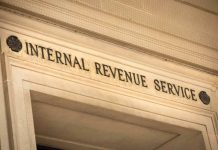
Let’s face it. Budgeting sucks. Tracking and limiting your spending can feel like a tedious and downright bummer of a task, which explains why so many Americans just don’t do it.
As mundane as budgeting may be, developing and sticking to a budget is one of the best ways to reach your financial goals. Though budgeting is rarely fun, there is a way to get your spending on track without putting yourself through too much turmoil in the process.
The 50/30/20 Rule
Developed by Massachusetts Senator Elizabeth Warren, the 50/30/20 rule is a simple way to organize your finances. This approach requires you to divide your spending into three main categories — needs, wants and savings/debt. By dividing and tracking your expenses under three categories, you reduce the amount of time spent detailing your spending, allowing you to focus more on the big picture.
First, Determine Your Take-Home Pay
The first order of business is to determine your after-tax, or gross, income. If you are a salaried employee, this figure should be easily accessible on your pay stubs. Each paycheck will show you a breakdown of what is withheld for taxes as well as the final number that indicates your gross pay.
If you’re a freelancer, determining your gross income can be a bit more complicated. Start by looking over your invoices for the past six months and average your monthly income, taking into account expenses and taxes.
Divide Spending Into Categories
Once you have your gross monthly income, you can divide your spending into three categories. According to the 50/30/20 rule, your “needs” bucket includes things like rent, utilities, groceries and health insurance, and should account for 50 percent of your take-home pay. The next category is dedicated to “wants”, which should make up about 30 percent of your gross income. The last category is dedicated to savings and/or debt and should represent about 20 percent of your income.
Assess Your Progress
Once you’ve divided your income and expenses, spend a month tracking what you spend and making sure you don’t exceed your limits. If you do overspend, take some time to reassess your categories (Maybe some of those “needs” are actually “wants”).
Budgeting isn’t always enjoyable, but one of the biggest money mistakes you can make is not having a budget at all. If you’re struggling to come up with a system that works for you, give the 50/30/20 method a try. If done right, it can help you meet your financial obligations and pay down your debt, while still being able to spend on the fun stuff too.
Copyright 2019, DailyProsper.com















